Atlas Model RR Co. has re-released its HO scale model of a well-known Alco workhorse, the four-axle RS-11 road switcher, with an upgraded ESU LokSound Select dual-mode Digital Command Control decoder. The decoder features realistic sounds and smooth motor control under both DCC and direct current (DC).
History. Alco released the 1,800-hp RS-11 in 1956. Designed to replace its own RS-3 and compete with Electro-Motive Division’s GP9, the RS-11 was a modest success. A total of 327 were built for American railroads between February 1956 and May 1961; Alco’s export subsidiary Montreal Locomotive Works built 99 more RS-11s for the National Rys. of Mexico (NdeM) until April 1964. A few are still in service today on short lines.
Our sample model is decorated in the Delaware & Hudson’s handsome blue-and-gray lightning-bolt scheme, one of six numbered 5000 to 5005. The six were originally built for the New York Central (numbered 8009 to 8014) but never delivered to that railroad; the D&H purchased them in 1961.
When delivered, they had small Roman road numbers beneath the “Delaware & Hudson” on the sides of their long hoods. In 1980, D&H adopted large sans serif road numbers, painted above the road name; nos. 5000, 5004, and 5005 received the large numbers. This is the paint scheme offered by Atlas.
All but one of D&H’s (then part of Guilford Transportation Industries) original six RS-11s were scrapped in 1988; no. 5002 was sold in 1998.
The shell and what’s under it. We reviewed a direct-current (DC) version of Atlas’ HO scale Alco RS-11 when it was re-released in April 2013; the tooling doesn’t appear to have been changed since then. All the dimensions I checked came within a few scale inches of those on a prototype drawing published in the 1956 Locomotive Cyclopedia of American Practice (Simmons-Boardman). The placement of details like air filters, access doors, grab irons, and louvers also matched the drawing.
The horn on our model was mounted on the cab roof rather than on the side of the short hood, as on the drawing, but horn placement often varied among prototype railroads. All the photos I found online of D&H no. 5000 showed the horn mounted on top of the nose.
The blue and gray paint was smoothly applied, without any voids in the lettering or striping where it crossed body panels. The yellow stripe that separates the colors was crisp, straight, and opaque, even where it passed over molded-in grills. All lettering was likewise straight, legible, and opaque, and matched prototype photos taken after 1980 and later. (Photos taken prior to the locomotive’s repaint show the “Delaware & Hudson” lettering higher on the long hood, with the road number beneath it.)
After removing the couplers and draft-gear boxes from both ends, I was able to remove the shell from the chassis by disengaging two clips from the back end, lifting the rear of the shell slightly, and sliding it forward to disengage two hooks on the front. Inside, two large brass flywheels flank the can motor, which connects via metal driveshafts to the gear towers. On top of the motor is a printed-circuit board with the decoder plugged to a socket under its front end. The speaker enclosure is on top of the rear of the chassis. Light-emitting diodes (LEDs) are taped in place on top of both ends of the frame; clear acrylic light pipes conduct the light to the headlights and number boards.
Testing 1, 2, 3. Dual-mode decoders like the ESU LokSound Select installed in this model will run on both direct current and DCC. I tested it first under DC. I was pleasantly surprised when the distinctive sound of an Alco 251B engine start-up sequence kicked in at 6V. Sound-decoder-equipped models often require much higher voltage to get started. At just 6.5V, the locomotive started rolling smoothly at a stately 1 scale mph. At 12V, it reached 78 scale mph, which is a bit faster than the 65 mph top speed of the D&H prototype’s 74:18 gearing, but not out of the range of the RS-11’s available gearings.
The only sound effect that plays in DC operation is the motor sound, but that “pocketa-pocketa” will warm an Alco fan’s heart. The RPMs ramp up and down with the locomotive’s speed, which is governed by a healthy dose of built-in momentum. And as you decrease the voltage to 6V, the locomotive comes to a stop, but the engine sounds remain on idle. Gradually decreasing the voltage to 4V plays a shutdown sound sequence.
Under DCC, I had much more control over the sound effects. The melodious Nathan P3 air horn and bell were loud and clear. Using other function keys, I could also trigger a coupler clank, exhaust fans, and dynamic brake.
The engine responded at speed step 1 as it had in DC, rolling at a nice, slow 1 scale mph. It reached its top speed of 70 scale mph at speed step 21, though. So I adjusted Configuration Variable (CV) 6, Vmid, to a value of 48. This lowered the middle of the speed curve and stretched out the upper half. After this adjustment, the locomotive rolled at 57 scale mph at speed step 21 and 74 scale mph at step 28.
Pressing F7 puts the locomotive in switching mode, which cuts the engine’s speed approximately in half for more precise execution of yard duties.
An Alco fan’s dream. Alco may not have outsold EMD’s Geeps, but the company makes up for it in the fervor of its fans. I’ve never met a model railroader who only kind of likes Alco diesels. In my experience, Alco fans absolutely love their Alcos. If you’re a fan who models in HO, you’ll love Atlas’ model, too.
Manufacturer
Atlas Model RR Co.
378 Florence Ave.
Hillside, NJ 07205
www.atlasrr.com
Era: D&H models as painted, 1980 to 1988; all RS-11s, 1956 to present (depending on paint scheme)
Road names (two numbers each): Delaware & Hudson (with large numbers), Apache, California Western, Conrail (ex-Penn Central patch out), Missouri Pacific, Nickel Plate Road (broad stripes), Norfolk & Western (“half moon” scheme), and Southern Pacific (“bloody nose” scheme). Also available undecorated.
Features
Accumate magnetic knuckle couplers, mounted at correct height
All-wheel drive and electrical pickup
Blackened metal wheels, in gauge
Directional light-emitting diode lighting
Eight-pin plug for Digital Command Control decoder (direct-current version)
ESU LokSound Digital Command Control sound decoder (DCC version)
Factory-applied and painted wire grab irons
Five-pole, skew-wound motor with dual brass flywheels
Painted crew figures in cab
Weight: 10.6 ounces





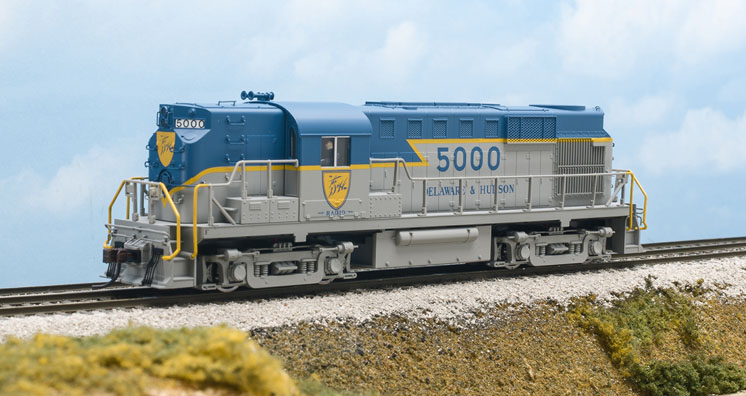
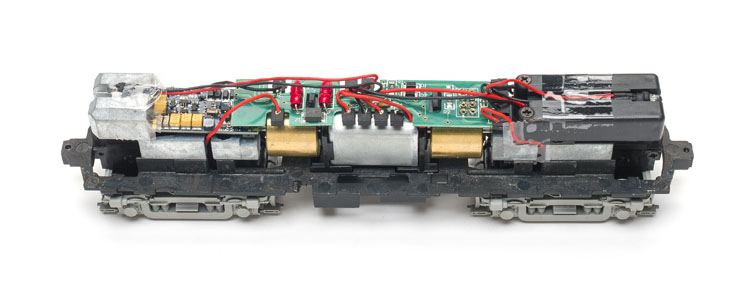
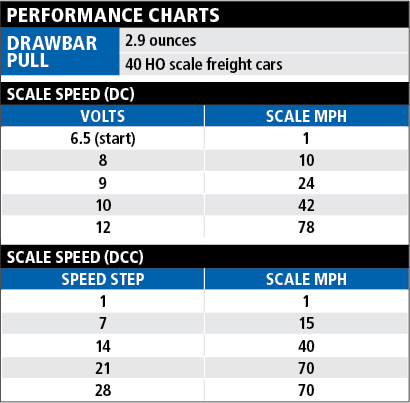

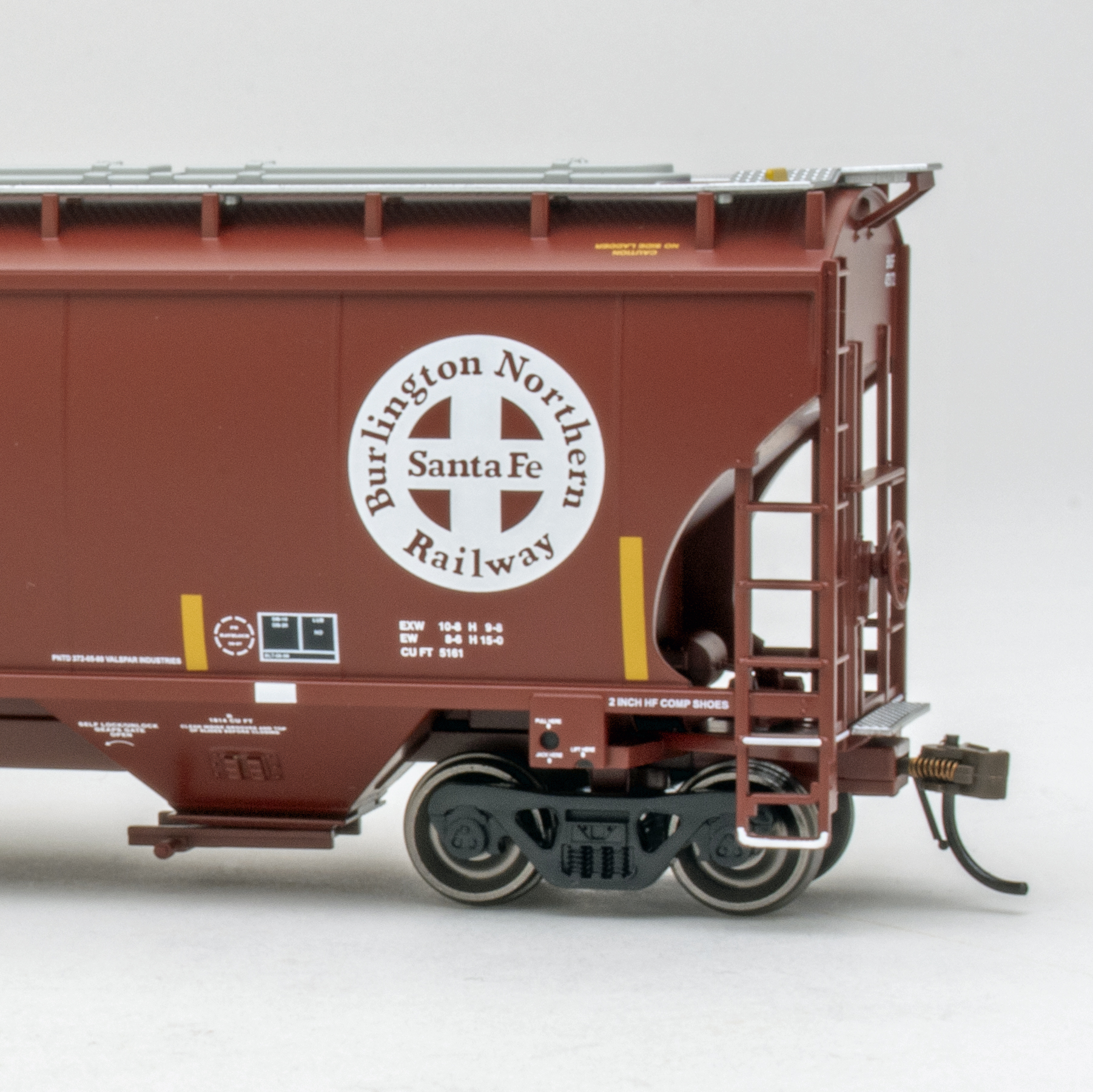
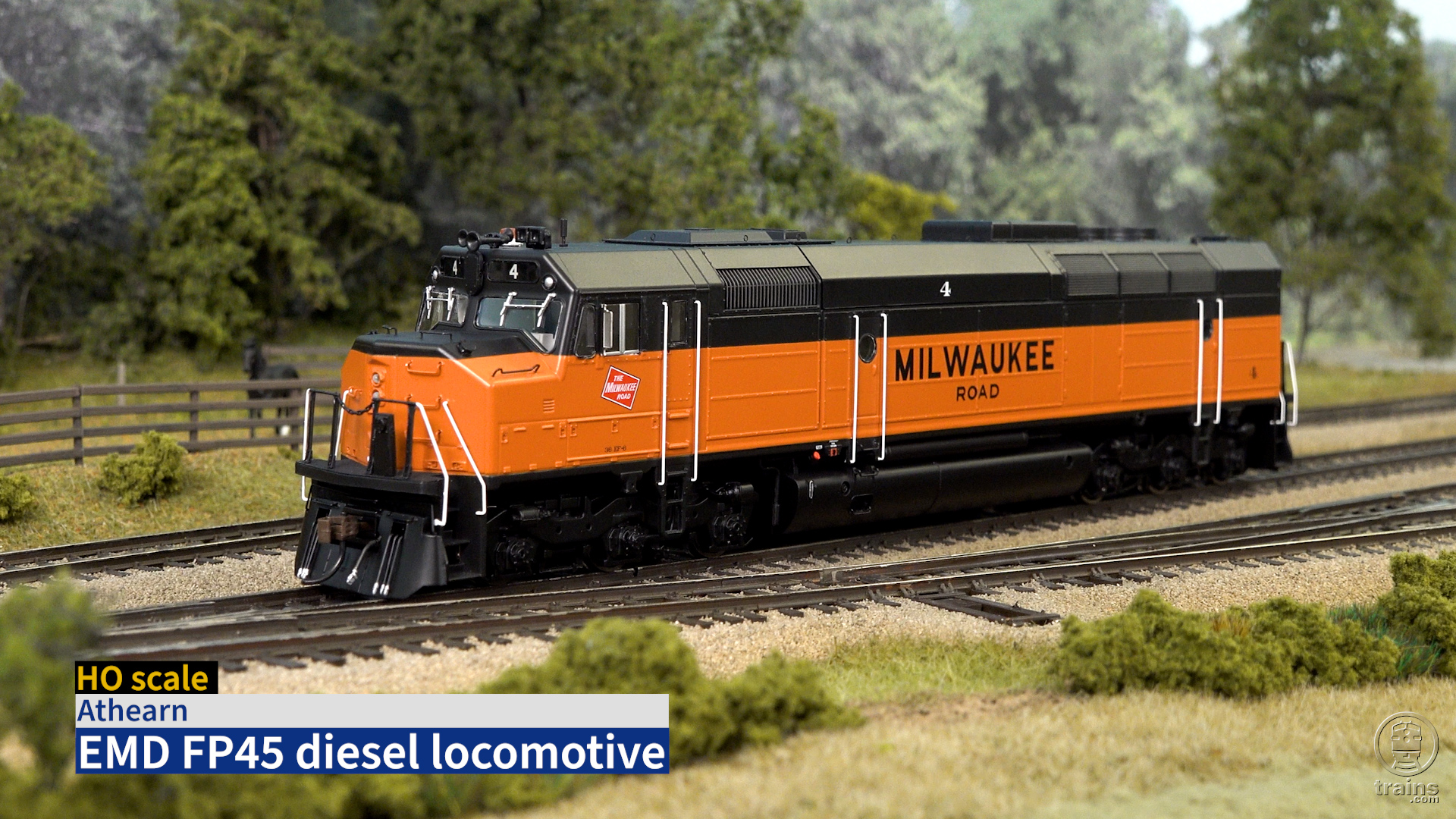
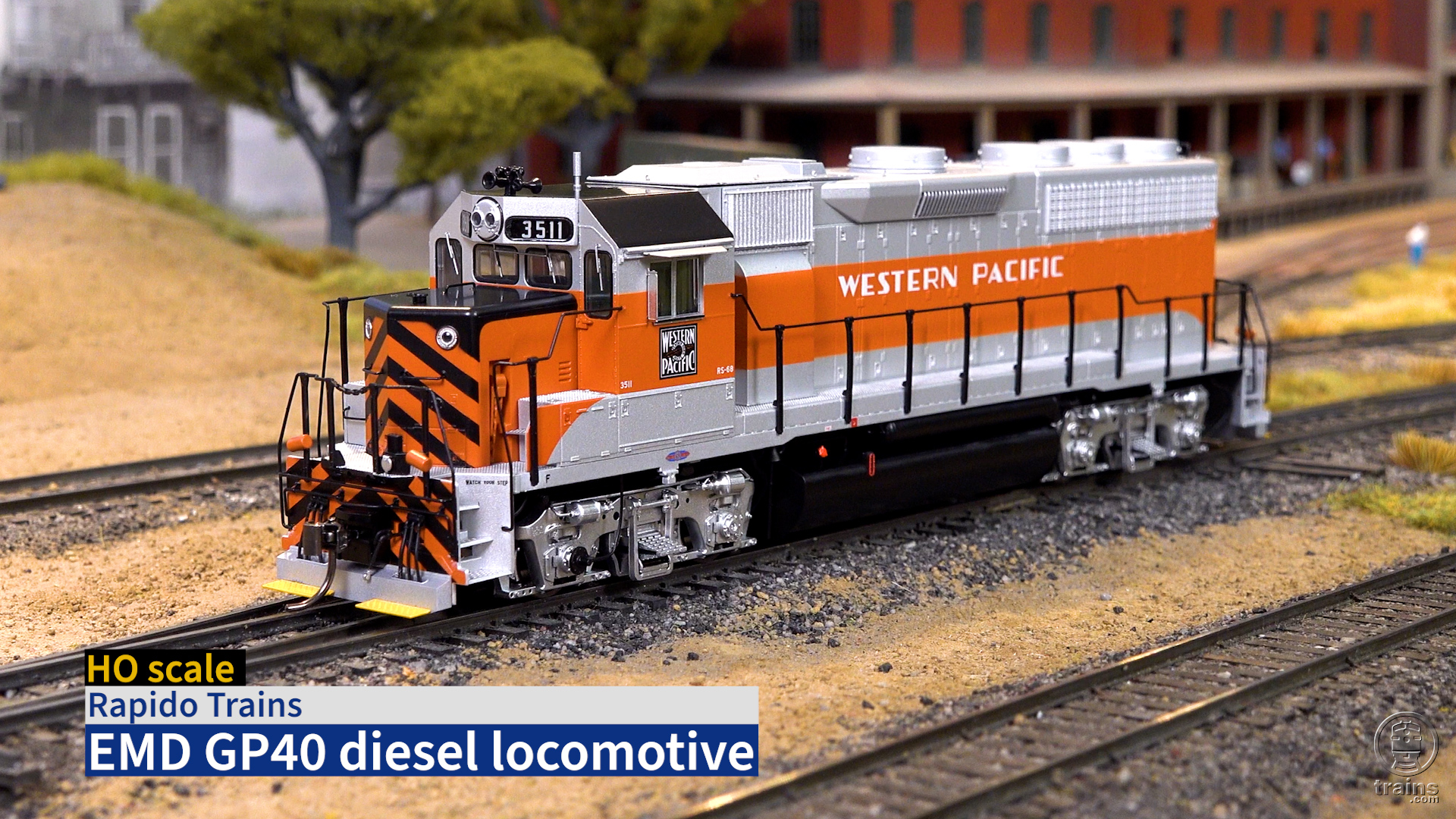
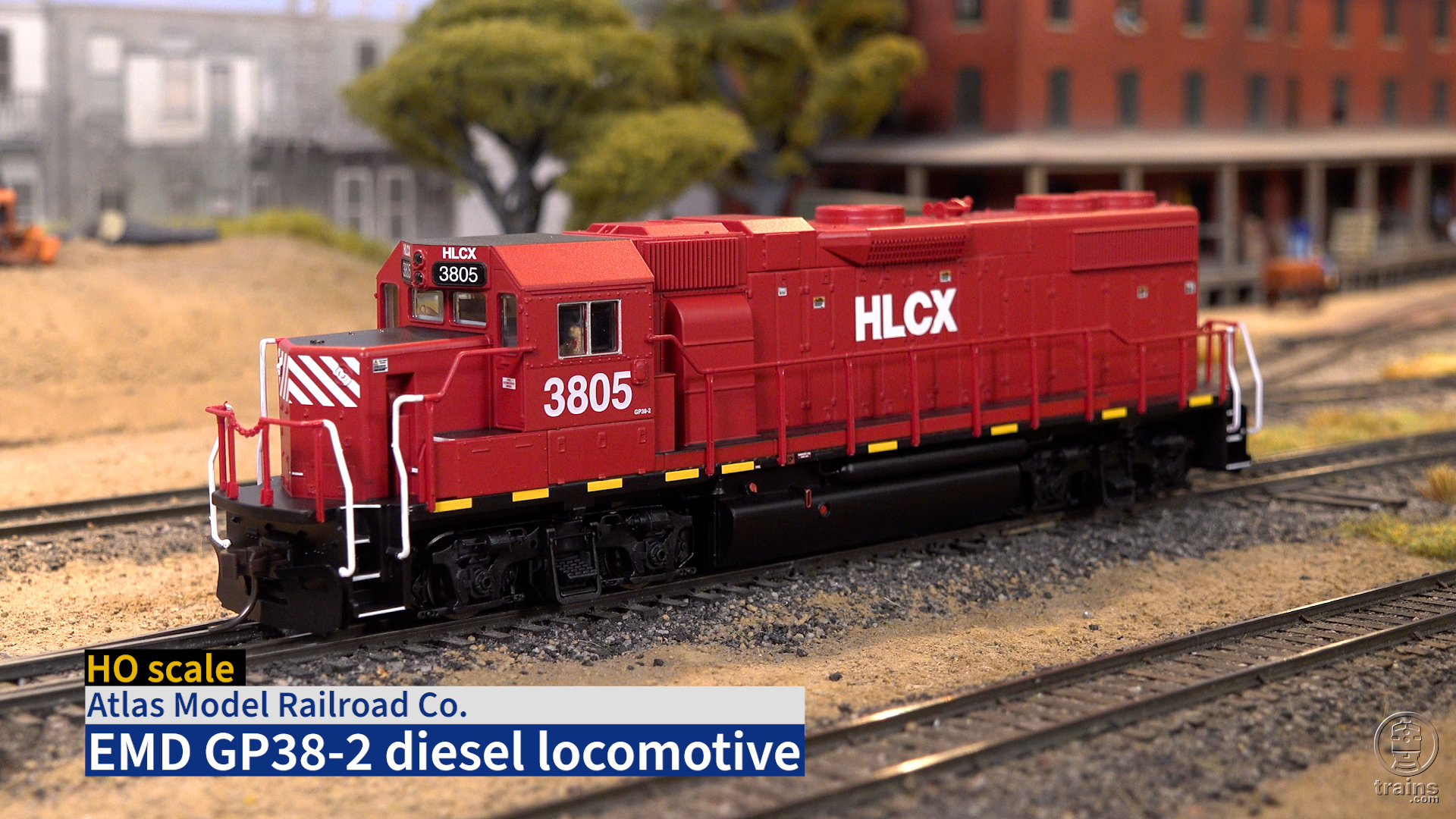




I am a bit perplexed by the DC vs DCC choices. The chassis picture shows the Lok decoder plugged into a jack on the bottom front of the motherboard. The 8-pin plug is visible on the top of the board. Does Atlas install a different board for the DC model? If not, wouldn’t a 21 pin plug be available on the bottom front of the board for a 21 pin decoder as well as the 8 pin on the top? Or is the 21 pin so customized that only the OEM decoder will run properly? Or possibly there is another reason that a user supplied 21 pin won’t work? Interesting question